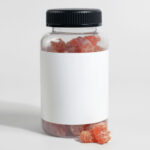My European Cancer Journey: Part 1
I have been across the world and seen some humbling, terrifying, and awe-inspiring sights. On a personal level, my trip to Europe was hard. Our luggage lost, getting lost in a city on foot, the strike in Spain, and several other major issues I’ve not written about, were very trying.
I’ve come away feeling, more than ever, a pull to turn some of my energies from my nutrition mission to a cancer mission.
I have met people devastated by their ignorance of the options until it is “too late.” I’ve met people so conflicted over the “standard of care” mandates that they’ve done nothing at all about their breast cancer for 5 years. At which time they show up in a clinic carrying their breast cancer in their arms like a toddler. Heavy, oozing pus and fluids, reeking a sour, rotten odor (that requires twice-daily changing of and avoiding social situations). I didn’t meet ONE woman like this—I met quite a few.
I met two women and introduced them to each other, who had been to the same doctor for IPT (low dose, slightly more targeted chemo) for their breast cancer. Both paid over $2,500 for a blood test to tell them which chemo was more likely to be effective for them. Both abandoned the protocol after 15-20 treatments when tumor markers trended up, and fast. (Incidentally, their doctor is now not practicing because he is fighting his own cancer.)
I’m not sure I believe in low-dose poison just like I don’t believe the evidence points to the efficacy of high-dose poison. It’s a tempting idea, but I’ve not seen any statistical evidence of its effectiveness, nor have I met anyone who thinks it saved them. Write me if you disagree.
Dr. Alexander Herzog in Germany told me that oncologists in the U.S. get commissions from the drug companies for every dose of chemotherapy they administer. I knew that. Bill Henderson reports that the average U.S. oncologist made $251,000 ten years ago, and 75 percent of that was what they earn from the chemotherapy. Their continuing education consists of primarily the journals funded by the drug companies, and conferences and exotic trips where drug companies “educate” them about uses for their products. (Small price to pay, the pricey trips docs take on the drug companies’ dime. AstraZeneca made $630 million selling the breast cancer trug tamoxifen, and $728 million on Zoladex for breast and prostate cancer. In one year. 2001.)
What I didn’t know is that a German doctor would lose his license for accepting kickbacks.
Surgeon Axel Weber, M.D., who runs the lovely Klinik Marinus in the Bavarian Alps, told me, “In Germany, we administer 19 times more chemotherapy now than we did in 1990. And we have increased the survival rate 0 percent!”
It is more clear to me than ever that the emperor of cancer treatment has no clothes. I have been pointing out for a long time that we have essentially the same death rate in 2012, from cancer, that we did in 1974 when Richard Nixon declared war on the disease. That’s when we began throwing money at it. Billions of American dollars have gone to R&D, which primarily were consumed by drug companies.
And now?
We detect cancer earlier and have vastly more patients. With no progress towards a cure.
Doctors don’t even talk about a “cure” any more. They are even backpedaling, fast, from the idea of “remission” or even the ever-lower bar, most recently the much-ballyhooed “five-year survival” statistic.
Now cancer docs speak of “managing your cancer.”
As cancer continues to frustrate, thwart, and stymie practitioners who take it on, the entire culture seems to meekly adapt to the new realities. Rather than challenging them.
Multiple readers emailed me, having learned about my most recent trip, saying, “What would you do?”
I will post a letter, soon, answering that question. A letter I wrote, from the bottom of my heart, to a real friend barely diagnosed, heading into radiation.
I’m not trying to be unhelpful, when I get squishy about that. In each case, the cancer patient writing me has very limited income. So they can go to ONE place—at great personal sacrifice.
I met two women in Europe at one dinner table, who were diagnosed with cancer right after they retired. Now their nest egg is disappearing rapidly, to pay for cancer treatment, instead of long-awaited R&R.
Very few of the docs, if any, have any statistics to share at all. I personally think it’s awkward to call up your former patients year after year and say, “Is Mrs. Wilson still alive?”
If you’re not on Big Pharma’s dole, you don’t likely have enough spare cash lying around to hire a research assistant to track 600 patients annually. (That seems to be an average for these small clinics.) Francisco Contreras is the notable exception. He compiled stats for five years on specific Stage IV cancer patients, and they are very impressive relative to comparable stats from U.S. oncology treatment.
I don’t love to be asked the “what would you do” question. Not only because it depends on the specifics, which I don’t always know in detail. But also because there are strengths and weaknesses of every place I’ve been. I am collecting criteria and data. Criteria of WHAT I WANT TO SEE in holistic cancer treatment, and data on what each clinic has. Eventually I will rate each clinic, according to weighted criteria.
Tomorrow, what the clear winner is, in my worldwide travels thus far.
Posted in: Detox, Health Concerns















Dear Robyn,
I totally agree with your evaluation of the cancer industry and the myopic perspective of most victims -driven by ignorance and fear. I hope in your search for better cancer treatments includes Dr. Nicolas Gonzales & Dr. Linda Isaacs of New York. May you be guided in your quest; I look forward to your perspective and comments.
Scotty
Scotty, I have tried a couple of times to reach them. If you have any pull there, please contact nikki@greensmoothiegirl.com with how I can visit their clinic. Thanks!!
A dear friend for over 30 years was diagnosed a few years ago with breast cancer. She underwent all the usual western medicine treatments, including a mastectomy. This past year, the cancer was back in the other breast. She looked at her options & decided she did not want to undergo more chemo, radiation, surgery or reconstructive surgery, and instead went for holistic treatment in Mexico. She called from the clinic & talked about how wonderful they are, all of the nutritional changes in her diet, etc. But…would it do anything to the cancer. The other night I got a call with great news – back in the states, the follow-up MRI showed that the tumor had disappeared!! She’s seen both sides of cancer treatment & I know which one she votes for .
Lynn, which clinic in Mexico? Thanks for sharing.
I have forgotten the clinic & Dr’s name, but will ask next time I talk to my friend
It was Dr. Gilberto Alvarez at the Santa Maris Clinic in Tijuana
Wow, thank you. You can travel and do all the research I’m unable to do in this phase of my life with four little ones. I SO appreciate all of your data on cancer treatment alternatives. I have never had to deal with cancer personally, but it makes me feel more equipped to have the information. Thank you so much and keep it coming! Bless you!
Crystal
Hi Robyn, thanks for sharing your knowledge, I healed myself of breast cancer in 2006 working with a medical intuitive and a bio resonance therapist. I had heavy metal poisoning from fillings and cadmium poisoning and chemical toxicity and 23 parasites and CFS, Candida etc. For me Candida was the hardest to shift, cancer was easy only took 6 months with diet and vitamins and cleansing and detoxing and was such a fantastic journey of growth and expansion.
All you have to do – to get rid of heavy metals once fillings are replaced is use Zeolite.
Also take good quality chlorella and alpha lipoic acid and of course Vitamin C etc.
Make sure you do the Hulda Regehr Clark parasite cleanse prior to the liver flush or those nasty critters will go into your liver making you feel sick
For me heavy metal and liver flushing were some of the cheapest things to do and when I read your mail I thought wow maybe you could spend your money better elsewhere on a nice yoga retreat or retreat with daily massage and enemas
And of course top of the list is a good water filter so you flush those toxins out
Much love
Ann
Hello Ann,
First of all, congratulations for winning the battle with cancer without any of the conventional medicine methods. You’re truly an inspiration. Your detoxing and cleansing protocol sounds wonderful. Do you have a blog or web dairy somewhere about your journey to cleanse and heal yourself? If so I would like to read. Also, may I ask about your medical intuitive and bio resonance therapist name? I had tons of mercury fillings; and a few root canals till last year. But my mistake was that I went to a regular dentist to get them removed. I do have some health problems–some are just weird problems. So a very good medical intuitive will really help. I am open to suggestions…
Thanks in advance.
Ann, Did you say 23 parasites? How or what test did you get done to confirm that? I’ve been doing at least 2 coffee enemas a day for 6 months and still seeing things! Im on a 2 set of Dr Clarks parasite cleanse. If you could private message me. Do you have any pics to what the parasites looked like? Any other tips on getting rid of them?
Thanks Sarah
Sarah1981@comcast.net
Cell 215-859-6515
Robyn,
What type of test can the doctor give to determine if you have heavy metal toxicity?
Robyn,
I suspect the clinic in mexico is the Gerson clinic. There is a documentary on netflix about Dr. Max Gerson called The Gerson Miracle.
Hey Robyn,
I think that Lynn is talking about the Gerson Institute in Mexico. I have read some of the books by Dr. Gerson and I saw one of the movies made about him and is daughter Charlotte. I was wondering if you were going to talk about them at all. They seem to teach a lot of the same things that you do. Anyway, I would love to see what you think. I will keep an eye out for it.
Thanks,
Julia
Low dose naltrexone is supposedly very effective at keeping cancer at bay. It’s cheap and there are rarely any side effects. Google it. There’s lots of info. Mercola.com also has articles regarding it.
Kathy, yes. It’s still a drug (using it for cancer is off-label), and while low dose has testimonials associating it with success with cancer, there are many other supplements with more evidence of efficacy, that are not synthetic drugs. Worth a look, though.
Hi Robyn, I’ve hung on to the sentence at the end of this post ;): “Eventually I will rate each clinic, according to weighted criteria.” Do you have a timeframe of when you will post the ratings of all the clinics you visited? Not to pressure you of course! We have a friend who just found a large brain tumor and had surgery to remove it the next morning. (This was last week). I’m looking forward to sharing that info with them. Thanks so much for all of your invaluable research! Cindy
Cindy, that will be part of a cancer course we are developing and unfortunately it is nowhere near done. 🙁 It will be on the cancer site we build, not here. But you’ve got my favorite—Paracelsus al Ronc.
thank you, Robyn! I am particularly interested in your thoughts on the Gerson Insitute in comparison with Paracelsus al Ronc–as far as effectiveness in fighting cancer. This is for my friend who has the brain tumor. Gerson is so much much closer than PaR. Wondering how high it would rank… thank you as always!
Cindy, Gerson is the only one that won’t let me go there. They are terrified of investigation, etc. I love the Gerson Diet for cancer. As for the treatments, I like Paracelsus. You can do the Gerson Diet at home. (It’s a tremendous amount of work.) In fact, they will tell you that you have to go home and do it for 2 years anyway. My grandmother did it.
Ah, that’s no good! I just emailed my contact at Gerson to ask if that decision could be changed. Don’t know if they will change their policy or not, but I hope so! Thanks for the additional info…very helpful.
They do a lot of similar treatments. Gerson may do more like low dose chemo and such. I’m trying to compare the two also as far as the treatments go. I need to decide which one. I need help! I know the Gerson Therapy has great success! Im trying to do that now. Its super hard! No salt! Not fat! (Olive oil, coconut, butter)
Robin where you at least able to look at the treatments they offered at the Gerson Clinic?